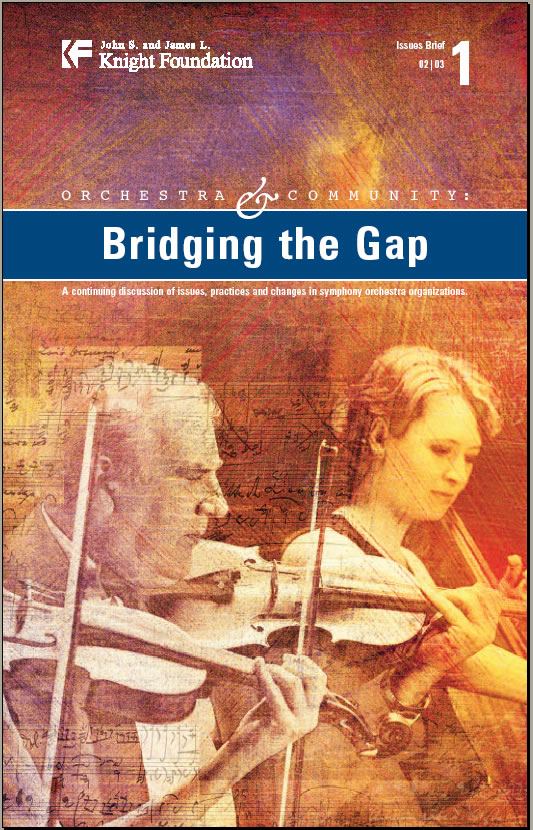INITIATIVE DESCRIPTION
Besieged in the early 1990s by requests for emergency funding to “save our symphony,” Knight decided to tackle symphonies’ systemic problems head-on by encouraging them to be more entrepreneurial with their audiences. In 1992, Knight created a $5.4 million, five-year initiative to build the connection between orchestras and their audiences. In 1999, the foundation approved a second phase, expanding the program to a total of $13 million over 12 years.
ASSESSMENT PURPOSE & APPROACH
Key Questions:
- What were Knight’s initial assumptions about the relevance and necessity of orchestras to their communities, and how did those assumptions change?
- How do orchestras confuse content (classical music) with its delivery system to their own detriment?
- Why is it so difficult for symphonies to innovate?
- Why is the question of mission so important and what is Knight’s preferred mission for the community symphony?
- What other facts, including mistakes in Knight’s theory of change, emerged from research conducted during Phase II of the Magic of Music, the largest discipline-specific study of U.S. arts consumers, involving 25,000 people in 15 distinct markets?
Approach: The evaluation included interviews with staff and industry insiders to determine the impact of the first $10 million and eight years of the program. The report is excerpted from McPhee’s April, 2002 address to orchestra administrators, musicians and board members at an annual retreat in Oregon.
Assessment Partner: This report was written by Penelope McPhee, Vice President and Chief Program Officer.
PROJECT FINDINGS
- Community Relations – Knight’s program was based on its commitment to expand and deepen the ties of symphonies to their audiences. But community vitality isn’t enhanced by a symphony unless that orchestra is relevant to its community. Symphonies need to reinvent themselves by becoming more entrepreneurial and tuning in to their existing and potential audiences.
- Leadership – Musicians and their directors must take the lead in increasing engagement with the audience; consistent leadership is required for strategic change; expected outcomes must be delineated at the start of grant making.
- Innovation Requires Input – Research capability, general consulting and the consortium concept offered by Knight had a more lasting impact than dollars.
- Insights – Longer timeframes and less ambitious expectations are more appropriate for future programs.
